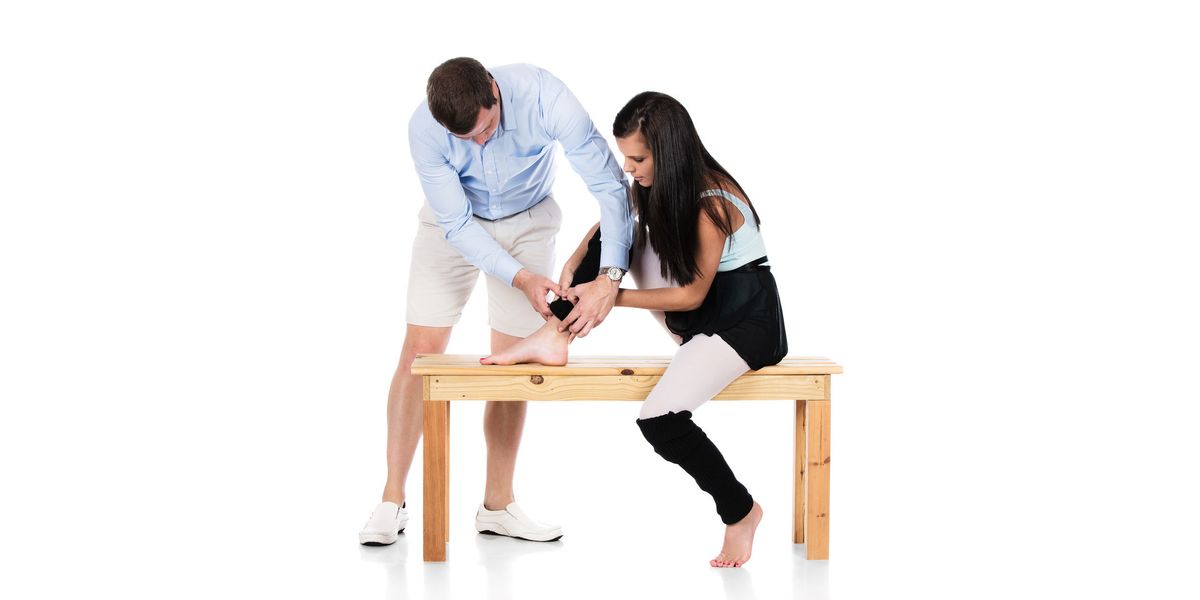Here’s Why Even Young Dancers Should Be Thinking About Injury Prevention
Have you heard the story about the dancer who needed a double hip replacement…at age 16?
It’s not an urban legend—just ask iconic choreographer Mia Michaels. In a video series about dance injuries, produced by Apolla Performance Footwear, Michaels tells the tale of a teenage comp kid who pushed so hard she ended up in surgery.
That dancer’s harrowing story was one of the inspirations for the Bridge Dance Project. The new initiative—brainchild of Jan Dunn, co-director of Denver Dance Medicine Associates, and Kaycee Cope Jones, COO of Apolla—aims to connect members of the competition and commercial dance communities with dance science experts. While many academic and professional concert dancers have benefited from recent advances in dance medicine, that information hasn’t made its way to most of the young students in convention ballrooms. And as the technical demands on those students increase, so does the number of injuries.
We talked to Dunn and Jones about how the Bridge Dance Project was born, the initiative’s long-term goals, and why young competition and commercial dancers should make injury prevention a priority.
How did you two first connect?
Jan Dunn:
A colleague of mine sent me the link to the Apolla video with Mia telling that hip replacement story—I’d never heard of Apolla before then. Immediately I thought, Wow, This is huge. For Mia, this award-winning choreographer, to be saying that action needed to be taken—it meant something. Traditional dance medicine has made inroads into the academic world and especially the professional ballet world, but we haven’t really gotten a foothold in the competition scene, or been able to reach the average dance studio. I’d been watching things like “So You Think You Can Dance” and just cringing, worrying about these young dancers doing such incredible but also potentially damaging things to their bodies. And here was someone talking about injuries in that exact group. So I reached out to Kaycee and told her how impressed I was. She was immediately receptive.
Why are convention and commercial dancers at especially high risk for injury?
Kaycee Cope Jones:
One reason is the increasingly high level of technique at these competitions and conventions. These dancers are doing things we’d never dreamed of a few years ago! And with those higher expectations—the push for hypermobility, for harder and faster dancing—comes increased risk. Just like these students are going to school to learn math, they need to educate themselves about their bodies. But how can they do that? Ballet companies and academic institutions have the resources to bring in dance science experts to help their dancers, but students who train at local studios and go to competition on weekends don’t have that kind of access. For many young dancers, the only sources of information are their teachers, who may not be trained in dance science, and their favorite social media influencers.
JD:
And the dance science research that is available, much of that literature is very scientifically oriented. So if you’re not from that background, it might go over your head—it’s not really speaking to your everyday life in the studio.
What were your first steps in creating Bridge Dance Project?
JD:
Kaycee and I first began putting it together about three months ago, so we’re still in the early stages. But we started by assembling a board—people from her world, and people from my world, with different skill sets and networking capabilities.
KCJ:
Our goal is to help dancers see a 360-degree view of health, so we were looking for people from all different perspectives—dance medicine researchers, psychiatrists, eating disorder specialists, physical trainers and therapists. We want them to share their expertise about dancers’ minds, bodies, and souls.
What are your longer-term goals for the initiative?
JD:
We’re envisioning a network of medical professionals and dance educators who can give presentations at studios or offer clinics at conventions. All of it will be offered free—it’s not a money-making thing.
KCJ:
One of our board members created the Doctors for Dancers directory—that’s such an amazing tool, and we want to expand on that, to connect dancers to the dance medicine specialists who really understand them and their injuries. We’re also going to put together dance medicine resources written in everyday language, addressed to the everyday dancer.
JD:
Speaking the dancer’s own language is so important. For example, it’s not “external rotation of the hip,” it’s “turnout”!
Where can readers learn more about Bridge Dance Project, and what other wellness resources do you recommend?
JD:
We’ll be launching a website, a Facebook page, and a monthly newsletter soon. Use our email sign-up to stay in the loop.
KCJ:
In the meantime, Doctors for Dancers, which we mentioned before, is a fabulous resource. And so is 4dancers.org, a dance wellness site with advice on a lot of different topics. Education is so powerful—learning about your body as a dancer will change how you think, how you eat, how you train, everything.




